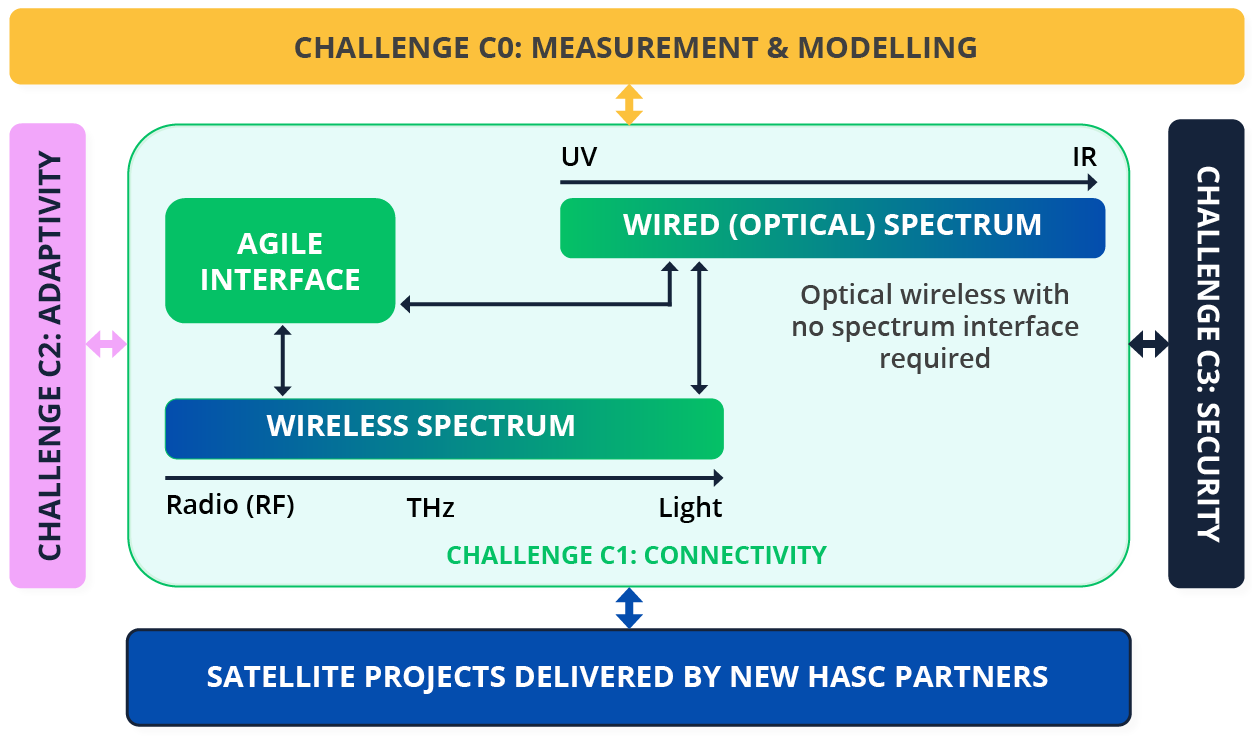HASC Research
HASC is undertaking research spanning spectrum measurement and modelling, the physical layer, and adjacent layers of the network stack.
Our research is organised into three principal areas:
- All-spectrum connectivity: identifying optimal approaches to combining wired and wireless spectrum resources to achieve true end-to-end connectivity, extending beyond conventional transport paradigms.
- Efficient, reliable and resilient networks: developing methods for seamless and energy-efficient integration of heterogeneous access technologies, including fibre, microwave, mmWave, THz and Li-Fi.
- Trust and security: advancing physical-layer security for both optical and RF systems, integrating quantum key distribution (QKD) into end-to-end connectivity, and exploring optical wireless approaches to secure communications.
Team organisation
HASC is led by the University of Oxford, working in close collaboration with a multi-disciplinary consortium of academic partners at Queens University Belfast, UCL and the Universities of Bristol, Cambridge, Imperial and Southampton, alongside further collaborations with satellite projects. Our research challenges are structured across four themes: Measurement and Modelling, Connectivity, Adaptivity, and Security.

CO: Measurement & Modelling (OXF)
- Develop holistic model of connectivity
- Measurements, Modelling
C1: Connectivity (UCL)
- New Fibres, THz, optical wireless, MIMO
- Modification of propagation environment (RIS)
- New waveforms, multiple access techniques, Front-haul
C2: Adaptivity (Bristol)
- Al/ML techniques for control
- Demonstration using MATRIC platform
C3: Security (Cam)
- QKD/Physical layer security/post-quantum techniques.
Satellite Projects: Surrey, Sheffield, Liverpool, Heriot Watt, Bristol, Strathclyde, Kings College London, Queen Mary University of London, NPL, Essex, York, Bangor, Bristol, Kings College London
- Al augmented RIS, 6G Waveforms, PHY Security, RF Power
- Amplifiers, Spectrum (non-3GPP and 5G sharing)


Measurement & Modelling
Measurement & modelling, undertaken by Oxford University, focuses on developing a holistic model of connectivity that unifies both wired and wireless communication systems. The growing complexity of modern networks demands a more integrated approach to managing the entire spectrum of connectivity.






